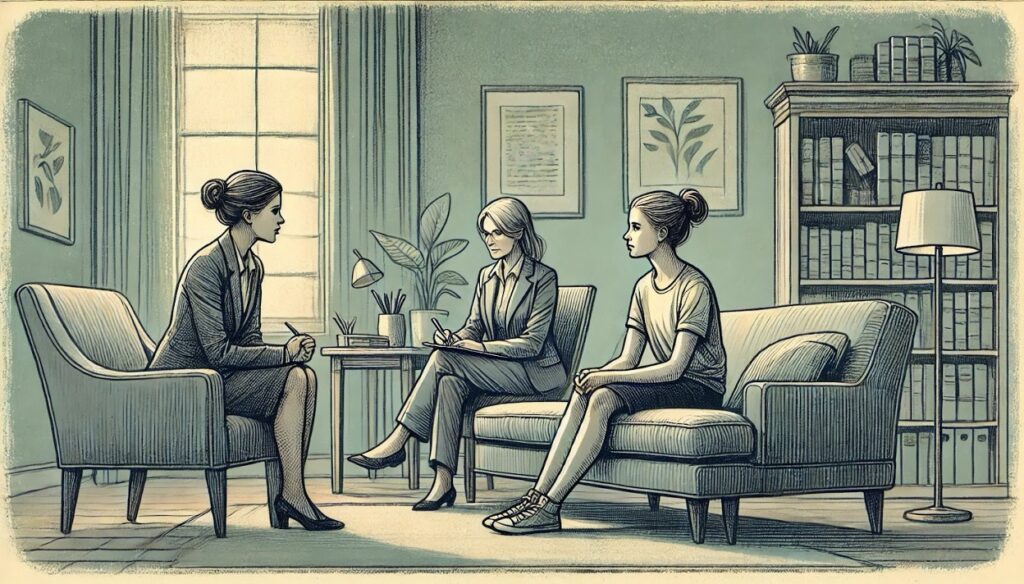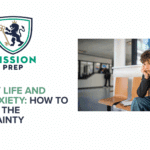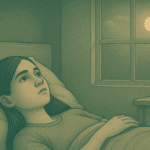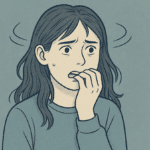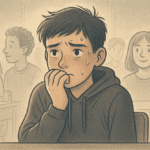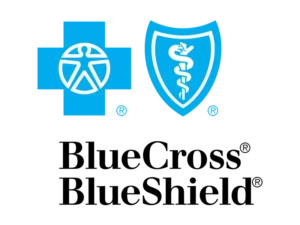Key Takeaways
- CBT, or cognitive behavioral therapy, is an effective treatment for teen anxiety, focusing on changing negative thought patterns.
- Various factors including social pressures, academic stress, and family dynamics can cause teen anxiety.
- Common symptoms of anxiety in teens include excessive worry, irritability, and avoidance of certain situations.
- CBT offers both short-term relief and long-term coping skills, helping teens manage anxiety effectively.
- Mission Prep offers individualized anxiety treatment plans for teens based on thorough assessments that consider biological, psychological, and social factors affecting each adolescent.
Teen Anxiety and its Challenges
Teen anxiety is a complex issue that affects many adolescents today. Understanding the root causes and symptoms helps to provide effective support.
What Causes Teen Anxiety?
Teen anxiety can stem from multiple sources:
- Social pressures, such as the need to fit in or fear of being judged, often play a significant role.
- Academic stress, including the pressure to perform well in school and get into a good college, can also contribute.
- Family dynamics, such as conflicts at home or high expectations from parents, may further exacerbate anxiety levels.
Common Anxiety Symptoms in Teens
Common signs include excessive worrying, restlessness, and irritability. Teens may also experience physical symptoms like headaches or stomachaches. Avoidance of certain situations or activities, such as social events or school, is another red flag.
Remember that these symptoms can vary greatly from one individual to another.
Impact on Daily Life and School
Anxiety can lead to difficulties in concentrating, completing assignments, and maintaining friendships. Some teens may skip school to avoid anxiety-inducing situations, leading to academic decline.
As such, addressing anxiety is crucial for mental health and for educational success.
Mission Prep Healthcare specializes in mental health treatment for teens aged 12-17, offering residential and outpatient programs for anxiety, depression, trauma, and mood disorders. Our therapies include CBT, DBT, EMDR, and TMS, tailored to each adolescent’s needs.
With a structured, supportive environment, we integrate academic support and family involvement to promote lasting recovery. Our goal is to help teens build resilience and regain confidence in their future.
Conventional Approaches to Address Teen Anxiety
Physical Activity and Mindfulness
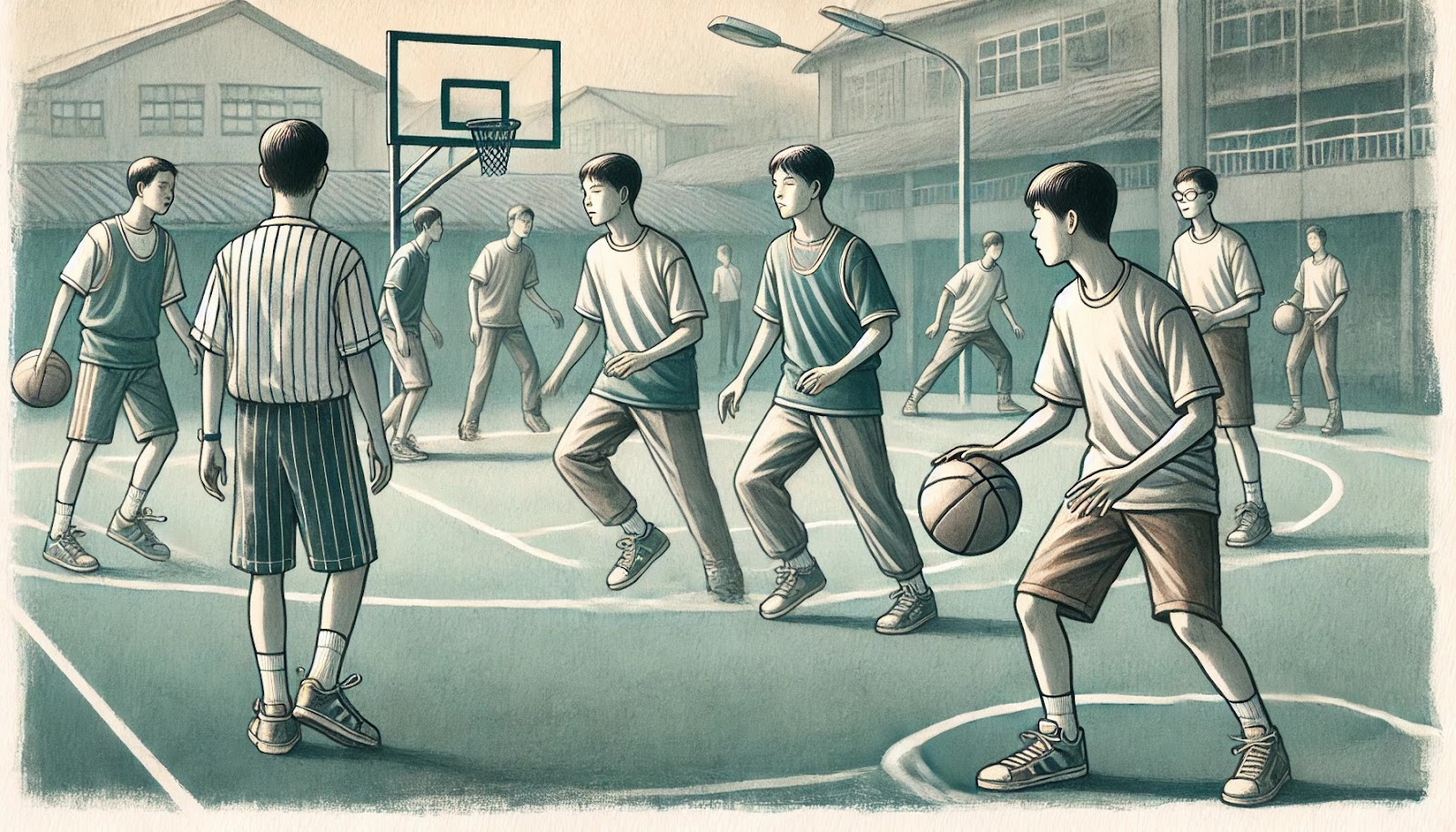
Physical activity is a natural stress reliever. Participating in sports or regular exercise can help reduce anxiety symptoms.
Besides that, mindfulness practices, such as meditation or yoga, teach teens to focus on the present moment and develop a calmer mindset. These techniques are effective and accessible—teens can easily incorporate them into their daily routines.
Medication Options
In some cases, medication may be necessary to manage severe anxiety symptoms. Antidepressants or anti-anxiety medications can be prescribed by a healthcare professional.
However, weigh the benefits and potential side effects. Medication should always be considered in conjunction with therapy for the best outcomes.
Traditional Talk Therapy
Talk therapy, or psychotherapy, is another conventional approach to treating anxiety. Discussing feelings and thoughts with a trained therapist helps teens gain insight into their anxiety and develop strategies to cope with it.
While traditional talk therapy can be effective, it may not address the specific cognitive patterns contributing to anxiety as directly as CBT does.
What Is Cognitive Behavioral Therapy (CBT)?

Cognitive behavioral therapy, or CBT, is a structured, evidence-based approach to treating anxiety. It focuses on identifying and changing negative thought patterns that contribute to anxious feelings. Unlike some other therapies, CBT is typically short-term and goal-oriented, making it a practical choice for teens.
Core Principles of CBT
CBT revolves around the connection between thoughts, feelings, and behaviors. By understanding this relationship, teens can learn to modify their thought patterns to influence their emotions and actions positively.
CBT encourages active participation, with therapists guiding teens to challenge and reframe their negative thoughts.
CBT Techniques for Teens
There are several techniques that help address teens’ unique challenges:
- Cognitive restructuring helps teens identify and challenge distorted thinking patterns.
- Behavioral activation encourages engagement in activities that improve mood and reduce isolation.
- Exposure therapy gradually exposes teens to anxiety-provoking situations, helping them build confidence and reduce fear.
These techniques, combined with consistent practice, empower teens to manage their anxiety effectively and develop resilience for the future.
CBT vs. Other Therapies
Unlike traditional talk therapy, which may focus more on exploring past experiences and emotions, CBT is action-oriented. It provides practical tools and strategies that teens can use to manage their anxiety in real time.
Another distinguishing factor is the emphasis on the cognitive aspect of mental health. CBT teaches teens how to identify and challenge distorted thoughts, which can be particularly effective in reducing anxiety. While other therapies may also address thought patterns, CBT does so with a specific focus on the connection between thoughts, feelings, and behaviors.
Pros of CBT for Teen Anxiety
Short-Term Benefits
Teens often begin to notice improvements in their anxiety symptoms within a few sessions. This rapid progress can be incredibly motivating, encouraging continued engagement with the therapy.
Long-Term Skills Development
CBT equips teens with skills that extend beyond the therapy sessions. The techniques learned in CBT can be applied throughout life, helping teens manage future challenges with resilience and confidence.
Skills such as cognitive restructuring and problem-solving become valuable tools in managing not only anxiety but also other aspects of life.
Self-Esteem and Empowerment
As teens progress through CBT, they often experience a boost in self-esteem. Successfully managing anxiety reinforces their sense of competence and control over their lives.
As such, teens learn to face challenges with a positive mindset and a proactive approach.
Cons of CBT for Teen Anxiety
Time Commitment and Consistency
CBT requires a significant time commitment and consistency to be effective. Regular sessions, often weekly, are necessary to maintain progress and reinforce new skills, which can be challenging for teens with busy schedules or those who struggle with motivation.
Additionally, the success of CBT relies heavily on the teen’s active participation. Consistent practice of the techniques learned in therapy helps in achieving lasting results.
Therapist Compatibility
The relationship between the teen and their therapist plays a significant role in the success of CBT. Find a therapist with whom the teen feels comfortable and understood.
A lack of compatibility can hinder progress and reduce the effectiveness of the therapy.
Not a One-Size-Fits-All Solution
While CBT is effective for many, some teens may not respond as well to this approach. Individual differences, such as personality and specific anxiety triggers, can influence the therapy’s success.
Consider other treatment options if CBT does not yield the desired results.
CBT Treatment Options for Teens
Individual Therapy Sessions
Individual therapy sessions offer a one-on-one environment where teens can talk about their thoughts and feelings in depth. The therapist can address specific concerns and develop personalized strategies.
This approach is particularly beneficial for teens who prefer a more private setting or have unique challenges that require focused attention.
Group Therapy Benefits

Group therapy provides a supportive environment where teens can share their experiences and learn from others.
It fosters a sense of belonging and reduces feelings of isolation. By participating in group sessions, teens can gain new perspectives and develop social skills that improve their overall mental health.
Online CBT Programs
Online CBT programs—an alternative to traditional in-person therapy—are designed to be flexible. Teens can engage with therapy at their own pace and on their own schedule, which can be particularly beneficial for those with busy schedules or who may feel more comfortable in a digital environment.
Many online CBT platforms provide interactive modules and exercises that guide teens through the therapy process. These programs often include video sessions with licensed therapists to ensure that the quality of care is maintained. Plus, online programs make it easier for teens in remote areas to access the help they need.
However, always make sure that any online program is credible and evidence-based. Look for platforms that have licensed professionals and a proven track record of success.
Supporting Your Teen Through CBT
Parental Involvement and Encouragement
Show interest in their progress and celebrate their achievements—no matter how small. This positive reinforcement can help build their confidence and reinforce their efforts.
Maintain open communication—encourage your teen to share their thoughts and feelings about therapy. By listening without judgment, you create a safe space for them to express themselves and ask for support when needed.
Creating a Supportive Environment
A supportive home environment is good for a teen undergoing CBT, so make sure that your home is a stress-free zone where your teen feels comfortable and secure. Encourage healthy habits such as regular exercise, a balanced diet, and adequate sleep.
Monitoring Progress and Adjustments
Regularly checking in with your teen to discuss their progress in therapy can help you stay informed about their experiences and any challenges they may face. Be open to making adjustments to their therapy plan if necessary. Sometimes, a change in approach or therapist may be needed to achieve the best results.
Mission Prep: Your Teen Anxiety Management Starts Here

At Mission Prep, we improve traditional CBT by integrating it with DBT and somatic experiencing within our biopsychosocial model.
Our residential treatment environment and outpatient programs provide the structured, supportive setting many teens need to truly focus on their healing journey.
Our specialized team of therapists in California and Virginia conducts thorough assessments to create truly personalized treatment plans that address the unique biological, psychological, and social factors influencing your teen’s anxiety.
Don’t let anxiety continue to limit your child’s potential. With our evidence-based approach, supportive community, and commitment to sustainable results, we can help your teen develop the skills they need to manage anxiety effectively now and throughout their lives.
Reach out today to verify your insurance coverage and take the first step toward your teen’s brighter, more confident future.
Frequently Asked Questions (FAQ)
Is CBT effective for all types of anxiety?
CBT is highly effective for a wide range of anxiety disorders, including generalized anxiety disorder, social anxiety, and panic disorder. It focuses on identifying and challenging negative thought patterns, which are common across different types of anxiety.
What age group is CBT most effective for?
CBT is effective for a broad age range, but it is particularly beneficial for adolescents. Teens are at a developmental stage where they can understand and apply the cognitive and behavioral strategies taught in CBT. However, younger children and adults can also benefit from CBT, with the approach adjusted to their developmental level and specific needs.
Are there any risks associated with CBT?
CBT is generally considered safe and effective, with minimal risks. However, like any therapy, it may not be suitable for everyone. Some individuals may find the process challenging or may not respond as expected.
How long do CBT sessions usually last?
CBT sessions typically last between 45 and 60 minutes. They are usually conducted weekly or bi-weekly, depending on the individual’s needs and progress.
What other types of therapy does Mission Prep use to treat teen anxiety?
Mission Prep Healthcare uses multiple evidence-based therapies, including cognitive behavioral therapy (CBT) to address negative thought patterns, dialectical behavior therapy (DBT) for emotional regulation, and somatic experiencing to help teens understand and regulate their physical responses to anxiety. Treatment includes both individual and group sessions.


